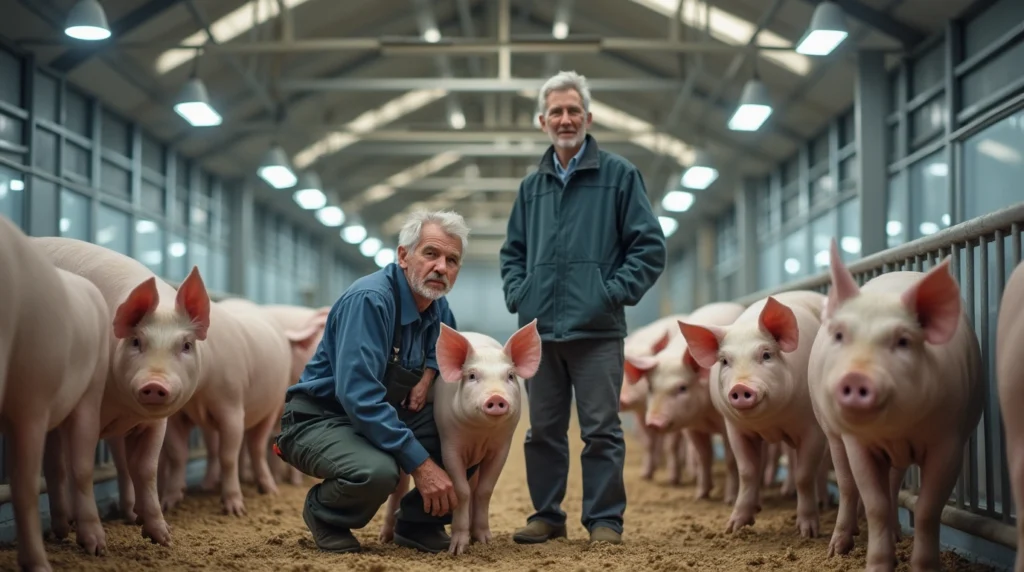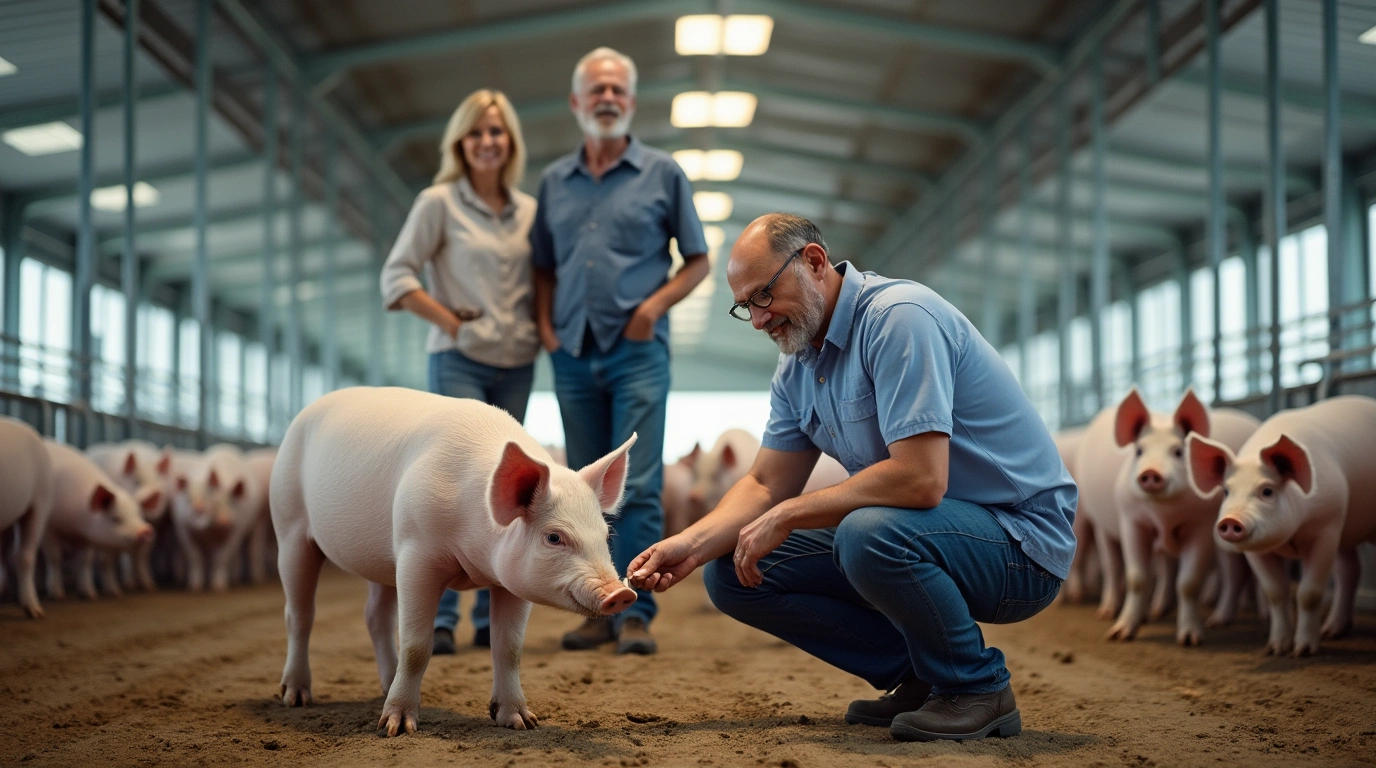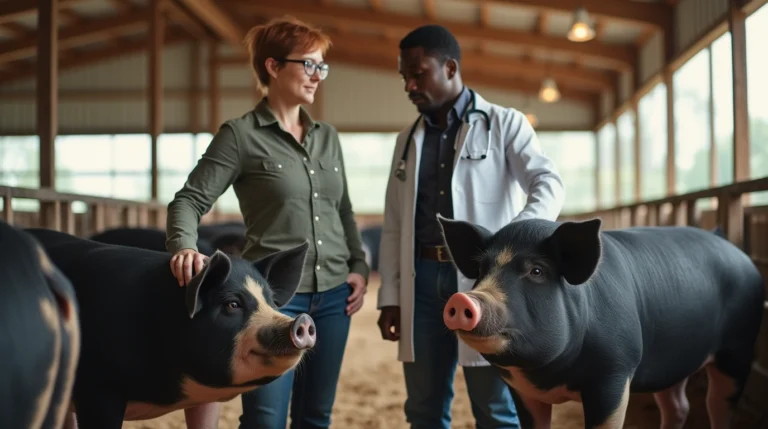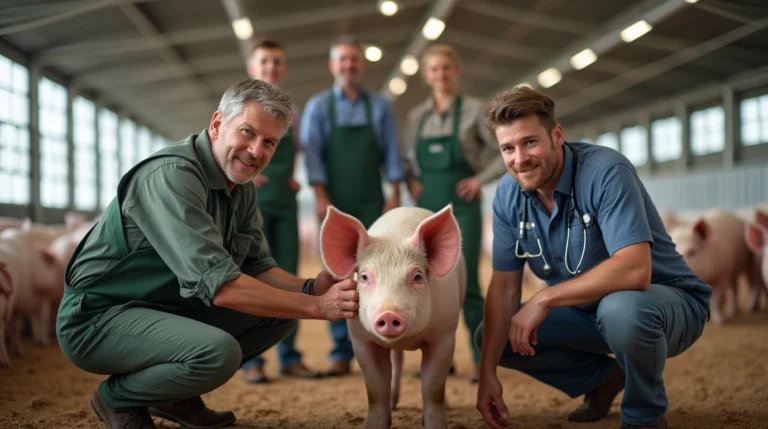Protect your Swine Dysentery herd from devastating swine dysentery with our expert 6-step prevention guide. Learn critical strategies to maintain herd health and stop disease spread.

Table of Contents
Swine dysentery is a highly contagious and potentially devastating bacterial disease that can rapidly decimate pig herds, causing significant economic losses for farmers and livestock managers. Caused by the pathogen Brachyspira hyodysenteriae, this intestinal infection leads to severe mucohemorrhagic diarrhea, weight loss, and potentially fatal complications if left unchecked.
This comprehensive guide will equip pig farmers and veterinary professionals with six critical prevention steps to halt the spread of swine dysentery and safeguard the health of their valuable livestock.
Understanding Swine Dysentery: The Basics
What is Swine Dysentery?
Swine dysentery is a complex bacterial infection primarily affecting pigs, characterized by:
- Severe bloody diarrhea
- Significant weight loss
- Reduced feed efficiency
- High morbidity rates
- Potential mortality in severe cases
Transmission Mechanisms
The disease spreads through multiple pathways:
- Direct contact with infected animals
- Contaminated feed and water sources
- Infected rodents and wild animals
- Contaminated farm equipment and clothing
- Asymptomatic carrier animals
6 Critical Prevention Steps for Swine Dysentery
1. Biosecurity: Your First Line of Defense
Implementing Robust Biosecurity Protocols
- Restrict farm access to essential personnel
- Implement strict clothing and footwear disinfection procedures
- Use dedicated farm-specific clothing and boots
- Establish quarantine areas for new or potentially infected animals
Disinfection Strategies
| Disinfection Area | Recommended Protocol | Frequency |
| Entrance Points | Foot baths with strong disinfectant | Daily |
| Vehicle Entry | Comprehensive vehicle washing | After each entry |
| Personnel | Mandatory clothing/boot change | Every farm entry |
2. Comprehensive Herd Testing and Monitoring
Diagnostic Approaches
- Conduct regular fecal testing
- Use PCR and culture-based diagnostics
- Implement quarterly comprehensive herd screenings
- Train staff to recognize early disease symptoms
3. Strategic Antibiotic Management
Responsible Antibiotic Use
- Consult veterinary professionals for targeted treatments
- Avoid broad-spectrum antibiotics
- Implement precise, evidence-based treatment protocols
- Monitor antibiotic resistance development
4. Optimal Nutrition and Gut Health
Nutritional Interventions
- Provide balanced, high-quality feed
- Include probiotics and prebiotics
- Ensure consistent water quality
- Minimize stress-induced nutritional challenges
5. Environment and Housing Management
Environmental Control Strategies
- Maintain clean, dry housing conditions
- Implement effective waste management systems
- Control humidity and temperature
- Regular housing deep cleaning and disinfection
6. Comprehensive Vaccination and Immunization
Vaccination Protocols
- Develop herd-specific vaccination strategies
- Consult veterinary immunization experts
- Consider emerging vaccine technologies
- Maintain detailed immunization records
Recommended Products on Amazon
- Veterinary Disinfectant Concentrate
- Biosecurity Boot Covers
- Professional Pig Health Monitoring Kit
- Comprehensive Livestock Probiotics Supplement
swine dysentery (FAQ)
Q1: How quickly can swine dysentery spread? Swine dysentery can spread within hours to days, potentially affecting entire herds within weeks if unchecked.
Q2: Are certain pig breeds more susceptible? While all breeds can be affected, younger pigs and certain genetic lines might show increased vulnerability.
Q3: Can humans contract swine dysentery? Direct transmission to humans is rare but possible. Proper hygiene and protective equipment are crucial.
Conclusion
Preventing swine dysentery requires a multifaceted, proactive approach combining rigorous biosecurity, strategic health management, and continuous monitoring. By implementing these six critical steps, farmers can significantly reduce disease risk and maintain herd health.
Call to Action: Share your experiences with swine dysentery prevention in the comments below! Explore more expert livestock care guides at Blithepet for comprehensive animal health insights.
Disclaimer: This guide is for informational purposes. Always consult veterinary professionals for specific health recommendations.





